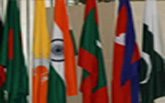



Articles
The British Asian Construct:
Asian British Connection Think Tank (ABC-TANK)
A meeting was held on 21st January 2009 at the Royal Commonwealth Club, 25 Northumberland Avenue London. Many views were expressed by the floor regarding the ‘British Asian’ construct. These are succinctly summarised below.
When an attempt was made to somehow define the term ‘British Asian’, it emerged that the term British Asian seems to intrinsically implying being less British than everyone else. Furthermore the term inadvertently pigeon holes and categorizes the community as homogenous in religion and culture, which it most definitely is not.
In healthcare the British Asian community faces many similar problems like access to healthcare, illness belief and behaviour being but a few of the binding factors. Immigration and forced marriages are other matters which bind British Asians together, but there are many issues which do not affect every British Asian subgroup in the same way. An example may be education, in which Pakistani and Bangladeshi students consistently under perform in comparison to students of the Indian community. It was questioned whether being ‘British Asian’ means having a particular skin colour and is it therefore the skin colour which is the binding force of British Asians? With such a fundamental differences in subgroups the question was asked whether how best we will speak under one common organisation.
It was recognised that being called ‘British Asian’ may hold a negative connotation in certain settings. It was proposed that perhaps it is the perception of the term rather than the term itself which may be problematic. It was also accepted that ‘British Asian’ is an identity which will not go away, as over the years individuals in this community have retained their parent cultures to various degrees as well as adopting the popular British culture.
It was identified that while following traditional practices of their parent cultures, the British Asian youth are integrating popular British youth culture into their lifestyles. It is a fragmented identity of sorts which is trying to find its space in society, perhaps as a British subculture that is porous and inclusive and opens up the possibility that anyone can now be its’ member. There has been a change in terminology from the traditional ‘coconut kid’ to modern ‘cappuccino kid’. This perhaps demonstrates the shift in desire from being ‘coloured’ on the outside and ‘white’ at heart to being ‘white’ in appearance and ‘coloured’ in the core.
It was suggested that the British Asian community is living in insecurity and feel frustrated at their social standing and status in wider society. Cultural differences from the locals could make freedom of expression difficult, such that they may wish to go back to their parent countries of origin for dissatisfaction at being treated as less than equal. However evidence suggests the contrary. British Asians rarely migrate to their parent countries and many may feel that they have more freedom of expression in the United Kingdom than anywhere else in the world.
Considering ways of improving and enhancing as a community, improving education was deemed key in bolstering the status of British Asians in society. It was recognised that there is an immense degree of educational variability within the sub-groups of British Asians and that if overcoming disparity has the potential to unite different Asian communities closer together.
After reaching a certain plateau, the British Asian voice has not gone further in public discourse. One contributing reason for this could be the hollowness in the British Asian identity which is bound together not by mutual inclusive sentiments towards each other, rather by a culture of exclusion. Many people see British Asians as a synthetic community, where music etc holds particular weight. Many other sub-identities have taken off in recent years, most notably the ‘British Muslim’. It was argued as a solution that one should define whether there is a ‘constituency’ which could identify with the British Asian. If so then, what are the concerns of this constituency that are not being met? It was argued that a common meeting ground should be sought which essentially unites the various British Asian communities. Furthermore many previous British Asian based groups have fractured because people said that they were not British Asian but identified more with being British Muslim, British Gujarati etc.
It was accepted that there is a sense of dissatisfaction in the British Asian community as people feel that the Government may not take notice of their plight. This is perhaps exemplified in the protesting against the Gaza conflict which has recently been occupying airwaves. Media misrepresentation may have fomented this frustration. The solution requires an understanding that there are many complex multifaceted dilemmas which merit debate as a collective community, e.g. reaction to international conflict, terrorism, integration, community cohesion, education, access, equality for all, discrimination, racism, stereotyping and healthcare. It was further argued that young British Asians today must permeate the ever evolving identity which is ‘British Asian’ into the political process so as to not marginalise themselves from political institutions: there is space for exploration of common political concern that can develop into a projection of interest.
It is concluded that the lack of mapping in geographical and civilization heritage makes definition of boundaries of what it actually means to be ‘British Asian’ extremely difficult. There is room for dialogue amongst ourselves to see whether we Arab, Burmese communities etc are in fact also considered British Asian.
Copyright © Asian British Connection (ABC) Limited